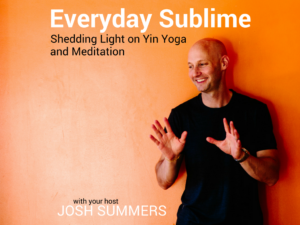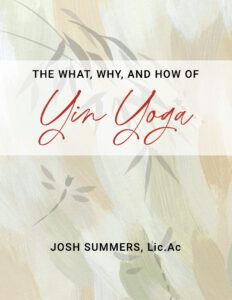In a Yin approach to meditation, you encounter the raw materials of your life: sensations of the body, perceptions, ideas, thoughts, views, and opinions. And in coming to know these elements more directly, you can shape and make of them what you will. How you act, think, speak, work, and rest are all of one process that you examine and develop in the workshop of your meditation practice. You are both the artist and the creative subject.
Intro to Yin Meditation
Yin Meditation: How To Fail At Meditation
What I’m about to suggest as a way of working with sleepiness will likely cause you to question my sanity. But, for me, and many that I’ve spoken to and worked with, allowing sleepiness to be, i.e. letting it go on, is the most effective strategy for working with it. And, in the context of this lesson, by doing so, you might find yourself inadvertently entering deep states of stillness by specifically not fighting sleepiness.
Yin Meditation: Relaxing Within the Hindrances
In contrast to more active and Yang ways of working with the hindrances, I’ve found it incredibly fruitful to adopt a more Yin approach. Rather than deploying any prescribed technique or strategy for dealing with them, I’ve found that bringing a relaxed, receptive, tolerant, and curious energy towards the hindrances is a really good first step. These qualities reframe the energy that my mind tends to have in approaching each hindrance. I’m not so much in attack mode any longer. I’m a bit softer and friendlier, encouraging a broader exploration of their energy.
Yin Meditation: Absorption Au Naturel
In this Yin approach to meditation that I’m describing, when you dial back any effort to try and control your mind, you’re giving your mind space to explore things that it finds naturally engaging. For example, while relaxing and being receptive to your experience in meditation, you might find that you start to think about about a dynamic at work, or an unfinished project at home, or a disagreement with someone, or a holiday you’d like to take. In allowing your mind to get absorbed into these kinds of themes and topics, certain qualities of focus and calm – often listed in meditation texts – do start to come together.
Yin Meditation: Exploring Stillness
The peace in the heart of these still states provides a balm to stress and anxiety. There is a profound relief and well-being that often accompanies these states. And frequently, when you experience them, there is a blooming of faith that something significant and important is developing in your meditation practice. And one of the truly wonderful aspects of a Yin approach to meditation is that internal stillness happens rather frequently on its own.
Yin Meditation: Staying Still in Meditation
By committing to a fixed time, you will inevitably go through phases of calm, agitation, boredom, restlessness; periods of wondering when it will end, and possibly periods of time of not wanting it to end. And in sitting through all these experiences — riding these internal waves — you will start to get to know your inner world better.
Yin Meditation: The Art of Releasing Conflict in Meditation
When your mind is given permission to be receptive to the total spectrum of experience and to relax within that process — and to not try and push unpleasant things away — one of the things that relaxes is the resistance to conflict. I’m sure you’ve heard the old aphorism: “That which you resist, persists?” Well, it’s true in meditation, too. If you resist conflict, it tends to just push back and kick its heels in deeper. But if you are receptive and allowing of it, the conflict tends to shift and move, change and flow; it comes and goes more fluidly.
Yin Meditation: Playing Your Mental Edge
The general “mental posture” within a Yin approach to meditation is for your mind to be receptive and open to the full range of your inner experience. But with such an open-ended approach, it’s not uncommon for challenging emotions and themes to arise within your practice. I suggest handling these strong mental/emotional energies in the same manner that you might negotiate strong sensation in the body during a Yin Yoga posture.
Yin Meditation: Relaxing the Mind
In a Yin approach to meditation, the main emphasis is to develop a relaxed and receptive attitude towards the experiences you have while meditating – you’re not trying to control or overly manage those experiences; you’re developing gentleness and tolerance to yourself and the variety of experiences you have while meditating.
Yin vs. Yang Meditation
When we look at different mental qualities, Yin qualities of mind tend to include traits like receptivity, allowance, yielding, tolerance, quiescence, reflection, passivity, or non-manipulation. Yang qualities of mind tend to involve traits like doing, manipulating, directing, improving, achieving, controlling, or becoming. From a Chinese perspective, both Yin and Yang qualities are essential. And the value in better understanding the relationship between Yin and Yang qualities is to promote balance and harmony between them.
What is Meditation?
Simply put, meditation is mental training, and a way to know yourself better. Meditation develops certain qualities of your mind. For thousands of years, this mental training was practiced within spiritual and religious communities, often requiring a fair amount of faith, belief, and superstition on behalf of the student. But now, there is a renaissance underway, ushering in new ways of practicing and thinking about meditation.


